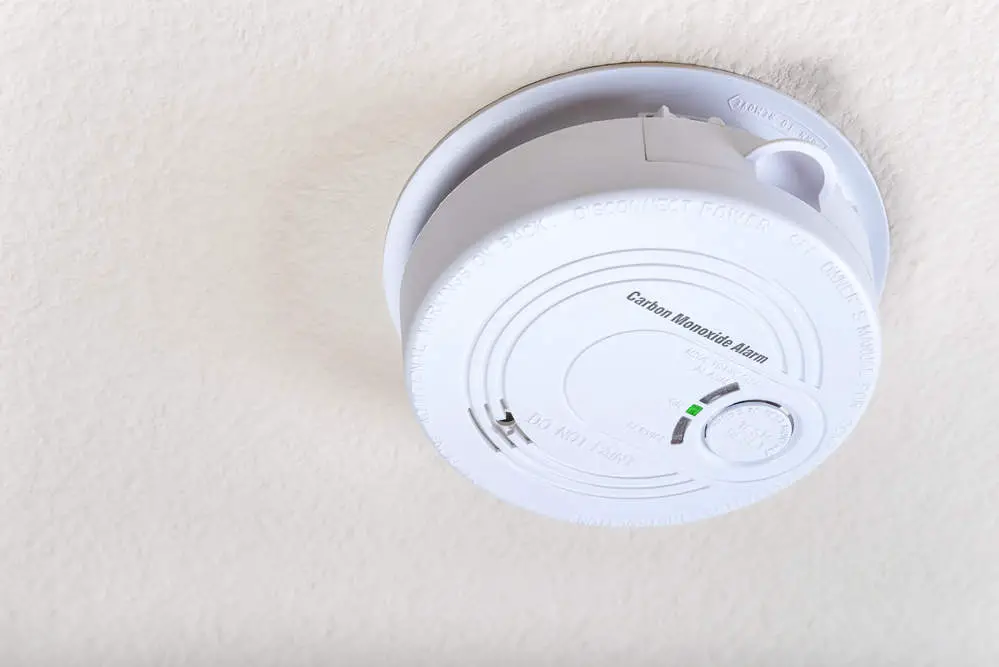
Carbon monoxide is a dangerous, odorless, and colorless gas. It’s important for homeowners to be aware of the presence of this hazardous substance in their surroundings. As a pet owner, you might wonder if your dog’s powerful sense of smell can detect this gas and provide an early warning system.
Unfortunately, dogs cannot smell carbon monoxide, as the gas has no distinct scent. This means that both humans and pets alike are at risk of carbon monoxide poisoning. It’s crucial to install carbon monoxide detectors in your home and to regularly check on their functionality in order to keep your family and pets safe.
Can Dogs Detect Carbon Monoxide?
Dogs are renowned for their exceptional sense of smell, which is significantly more acute than humans. This extraordinary ability enables them to detect drugs, explosives, and even diagnose certain medical conditions through scent. When it comes to carbon monoxide, a silent but deadly household hazard, their sensory capabilities meet a limitation.
Carbon monoxide, an odorless and colorless gas, eludes even the most sensitive canine noses. Despite the common misconception that dogs might possess a “sixth sense” for such dangers, they are unable to identify or alert humans to the presence of carbon monoxide. This misconception can be dangerous, as it may lead some to overly rely on their pets for detecting a gas that is undetectable without specialized equipment.
The best way to protect both humans and pets from the risks of carbon monoxide poisoning is to install and regularly maintain carbon monoxide detectors in your home. Remember, pets, due to their size and varied physiological responses, might be more vulnerable to the effects of this gas. Awareness and proper safety measures are key in safeguarding your household against this invisible threat.
While dogs’ olfactory prowess is remarkable and beneficial in many scenarios, it does not extend to detecting carbon monoxide. It’s essential for pet owners to understand this limitation and take proactive steps to ensure the safety and well-being of their entire family, including their four-legged members.
Related: Why Are Dogs Afraid of Vacuums?
Carbon Monoxide Poisoning in Dogs
Signs and Symptoms
Carbon monoxide poisoning in dogs can be difficult to detect, but there are some common symptoms that you should watch for. These include vomiting, lethargy, and weakness. Additionally, your dog might experience seizures, coma, and red gums. Here’s a list of some of the most common symptoms:
- Difference in usual behavior
- Breathlessness
- Vomiting
- Reddening of gums, skin, and paws
- Laziness
- Frequent yawning
- Drowsiness
- Seizures
- Unconsciousness
In some cases, your dog may exhibit hypoxia (low oxygen levels in the blood) or hypoxemia (reduced oxygen-carrying capacity in the blood). It’s crucial to identify these signs early and bring your dog to a veterinarian for prompt treatment.
Acute Responses
Once carbon monoxide enters your dog’s bloodstream, it can lead to immediate and harmful effects. The most prevalent is the interference with their red blood cells’ ability to transport oxygen. This may cause organ damage, particularly to the brain, heart, and lungs. Unfortunately, a high level of exposure can lead to coma or even death.
Your dog may also experience nausea, collapse, and sleepiness as acute responses to carbon monoxide poisoning. You should act quickly if you notice these symptoms and remove your dog from the potential source of exposure immediately.
Long-Term Health Complications
Long-term health complications from carbon monoxide poisoning can be quite severe. If your dog survives the initial exposure, they may suffer from long-lasting damage to their organs, in particular the brain, heart, and lungs. This damage may lead to a decreased quality of life and ongoing health issues, so it’s essential to monitor your dog’s condition and seek veterinary care if you suspect they have been exposed to carbon monoxide.
Related: Why Do Dogs Pee On Fire Hydrants?
Preventing and Handling Exposure
Safety Measures at Home
To protect your beloved pet from carbon monoxide poisoning, it’s essential to install carbon monoxide detectors in your home. Regularly test the detectors and replace the batteries to ensure they function efficiently. It is also essential to keep appliances properly maintained and well-ventilated.
Response to Suspected Poisoning
If your dog shows signs of carbon monoxide poisoning, such as nausea, vomiting, or confusion, act quickly. Promptly open windows and doors to allow fresh air to circulate in your home. Turn off any fuel-burning devices you suspect are releasing carbon monoxide.
In case of an emergency, evacuate your family and your dog from your home, and call for help. If your pet’s symptoms worsen, don’t hesitate to contact your veterinarian for advice.
Treatment Protocols
Upon arrival at the vet’s office, a veterinary professional will assess your dog for signs of carbon monoxide poisoning. Treatment usually includes administering oxygen therapy to aid in an optimal recovery. Fluids may also be provided to help maintain hydration and support organ function.
Follow your veterinarian’s guidance for any ongoing care or monitoring, after initial treatment. Regular check-ups may be necessary to ensure your dog’s full recovery and watch for any long-term effects, such as possible deafness.
Remember, your dog’s health and safety are your responsibility. Be proactive in preventing carbon monoxide exposure by taking the necessary precautions and being attentive to your dog’s behavior.
